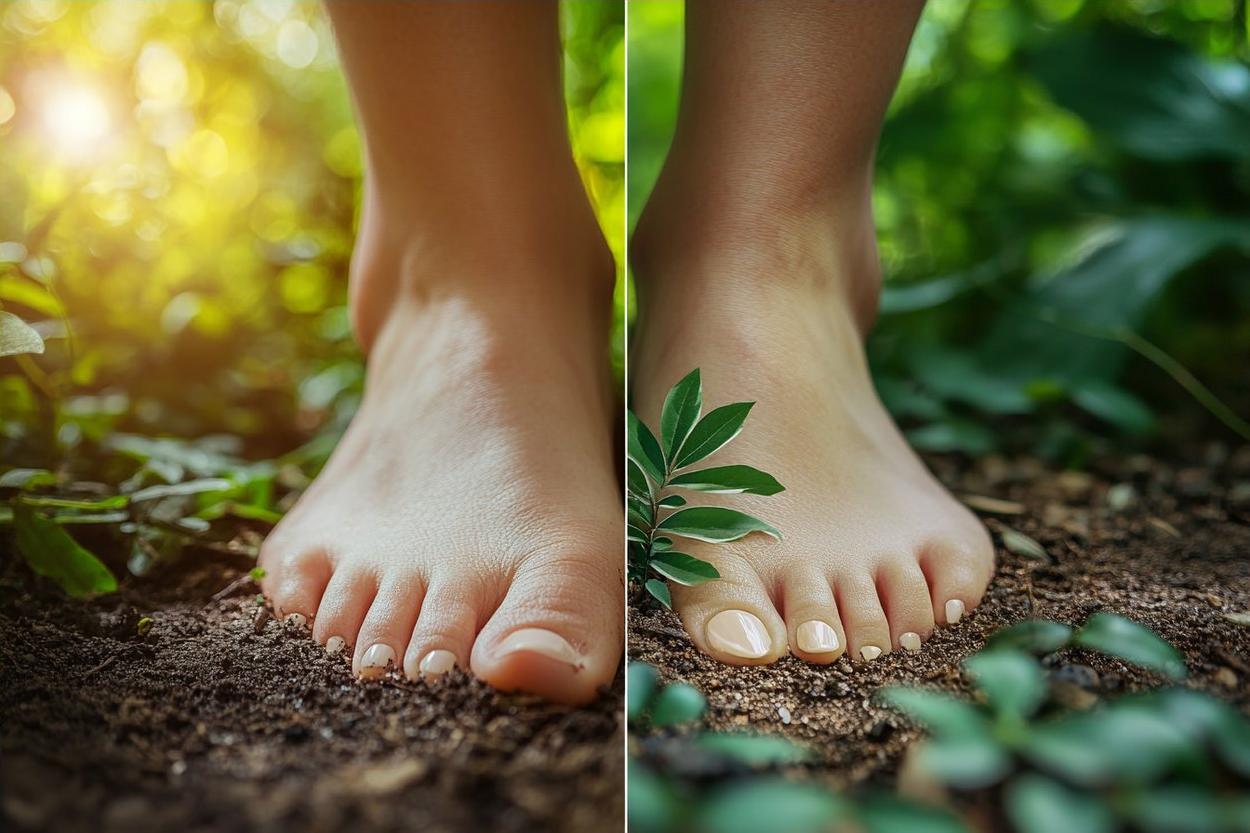Embracing Earthing: The Grounding Revolution in Health and Wellness
Are you seeking a natural way to boost your overall health and well-being? Imagine a practice that connects you directly with the Earth's energy, potentially reducing inflammation, improving sleep, and enhancing your mood. Welcome to the world of earthing, a growing wellness trend that's sparking curiosity and debate in the health community.

The Roots of Earthing: A Historical Perspective
Earthing isn’t a new concept. For millennia, humans have walked barefoot on the ground, slept on the earth, and maintained a constant connection with the planet’s surface. Our ancestors intuitively understood the importance of this connection, often attributing healing properties to direct contact with the earth.
In many indigenous cultures, practices that involve direct skin contact with the earth have been part of traditional healing methods for generations. These cultures recognized the earth as a source of energy and life, believing that maintaining a physical connection with it was crucial for overall health and spiritual well-being.
However, as modern lifestyles evolved, humans became increasingly disconnected from the earth’s surface. The widespread use of insulating footwear, elevated buildings, and synthetic flooring materials has created a barrier between our bodies and the ground beneath us. This disconnection has led some researchers to question whether we might be missing out on essential health benefits.
The Science Behind Earthing
The scientific basis for earthing lies in the concept of electron transfer. The Earth’s surface possesses a subtle negative electrical charge. When in direct contact with the ground, our bodies can absorb free electrons from the Earth. Proponents of earthing argue that these electrons act as powerful antioxidants, helping to neutralize free radicals in our bodies.
Dr. James Oschman, a pioneer in the field of energy medicine, has conducted extensive research on earthing. His studies suggest that grounding may help reduce inflammation, improve sleep quality, and even alleviate chronic pain. The proposed mechanism involves the stabilization of the body’s electrical environment, which may influence various physiological processes.
A 2015 study published in the Journal of Inflammation Research found that earthing could potentially reduce blood viscosity, a major factor in cardiovascular disease. The researchers observed that grounding resulted in a significant decrease in red blood cell clumping, which could lead to improved blood flow and reduced risk of heart disease.
Potential Health Benefits of Earthing
Advocates of earthing claim a wide range of potential health benefits. While more research is needed to fully validate these claims, preliminary studies and anecdotal evidence suggest some promising outcomes:
-
Reduced inflammation: Earthing may help decrease chronic inflammation, which is linked to numerous health issues.
-
Improved sleep: Some individuals report better sleep quality and reduced insomnia symptoms after practicing earthing.
-
Stress reduction: Grounding may help lower cortisol levels and promote a sense of calm and well-being.
-
Pain relief: Some studies suggest that earthing could alleviate chronic pain conditions.
-
Enhanced recovery: Athletes and fitness enthusiasts have reported faster recovery times and reduced muscle soreness.
-
Improved circulation: Earthing may help improve blood flow and reduce blood viscosity.
-
Hormone balance: Some research indicates that grounding could help regulate cortisol production and support overall hormone balance.
Incorporating Earthing into Your Daily Life
Embracing earthing doesn’t require drastic lifestyle changes. Here are some simple ways to incorporate grounding practices into your daily routine:
-
Walk barefoot: Spend time walking barefoot on grass, sand, or soil. Even a few minutes a day can be beneficial.
-
Garden without gloves: Gardening provides an excellent opportunity for direct contact with the earth.
-
Use grounding mats: These specially designed mats can be used indoors to simulate the effects of earthing.
-
Sleep grounded: Grounding sheets or mats can be used on your bed to maintain contact with the earth’s energy while you sleep.
-
Practice outdoor yoga or meditation: Combine the benefits of mindfulness practices with earthing by doing them outdoors on natural surfaces.
-
Beach activities: Swimming in the ocean and walking on wet sand are excellent ways to practice earthing.
-
Earthing-friendly workspaces: Consider using a grounding mat under your desk or computer to stay connected during work hours.
Grounding Wisdom: Earth-Inspired Health Tips
-
Aim for at least 30 minutes of barefoot time outdoors daily
-
Choose natural flooring materials like wood or stone for your home
-
Invest in leather-soled shoes for better conductivity when barefoot isn’t an option
-
Stay hydrated to enhance the body’s electrical conductivity
-
Combine earthing with deep breathing exercises for enhanced relaxation
-
Try earthing in different natural settings to experience varied benefits
-
Keep a journal to track any changes in your well-being after starting an earthing practice
The Future of Earthing in Health and Wellness
As interest in natural health practices continues to grow, earthing is likely to gain more attention from both the scientific community and health-conscious individuals. While more rigorous studies are needed to fully understand its effects, the potential benefits of reconnecting with the Earth’s energy are intriguing.
Earthing represents a simple, accessible approach to potentially improving our health and well-being. By incorporating this practice into our daily lives, we may not only enhance our physical health but also foster a deeper connection with the natural world around us. As we continue to navigate the complexities of modern life, perhaps the key to some of our health challenges lies right beneath our feet.





